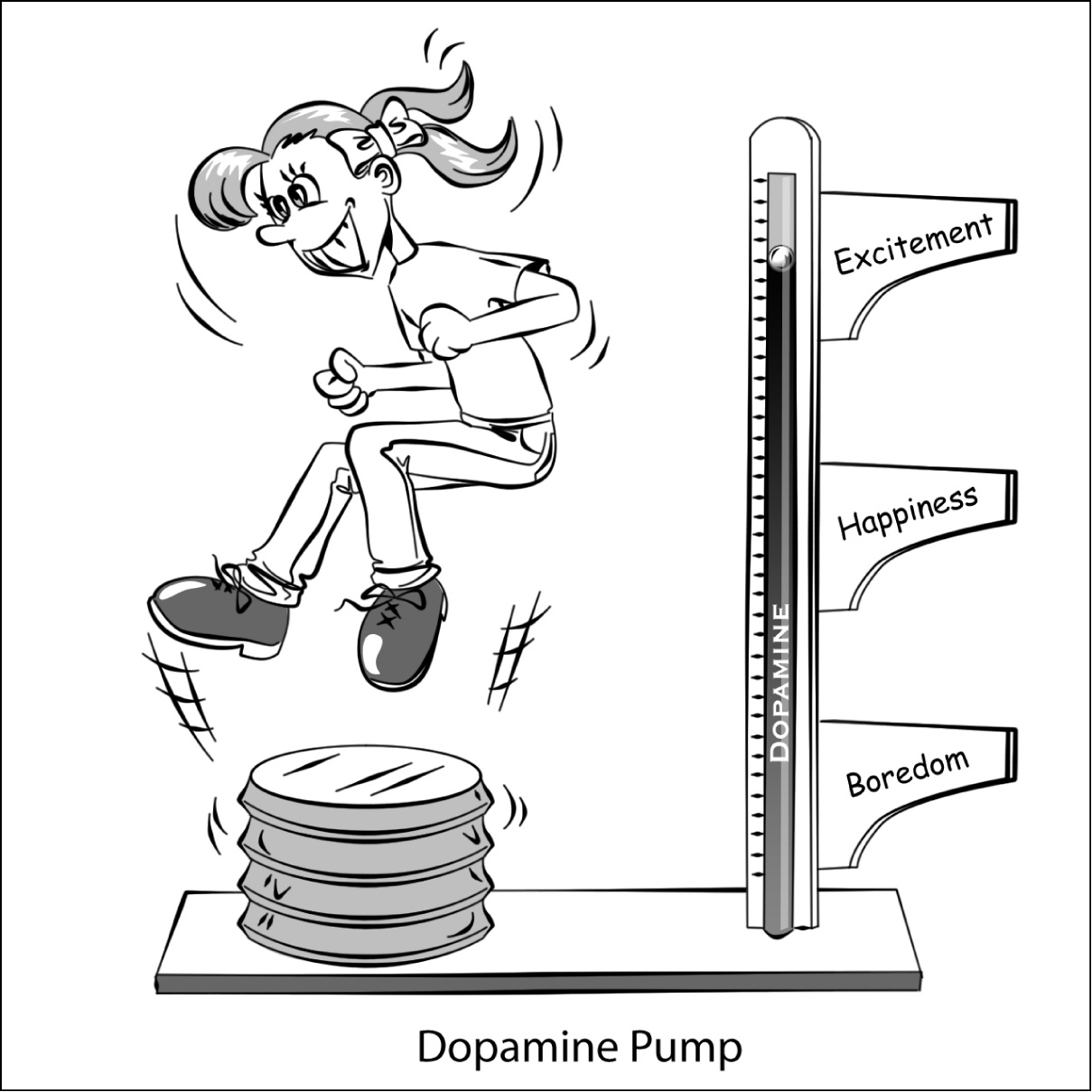 actually help them think. One way random movements could be effective is through activating dopamine release. Dopamine plays a critical role in body movement: people with Parkinson's disease are unable to initiate movement and appear paralyzed unless treated with the dopamine precursor, L-dopa. I hypothesize that, through random movements of their limbs, ADHD children are able to stimulate the release of dopamine, and thus increase its bioavailability for the important other roles involved in attention and learning.
actually help them think. One way random movements could be effective is through activating dopamine release. Dopamine plays a critical role in body movement: people with Parkinson's disease are unable to initiate movement and appear paralyzed unless treated with the dopamine precursor, L-dopa. I hypothesize that, through random movements of their limbs, ADHD children are able to stimulate the release of dopamine, and thus increase its bioavailability for the important other roles involved in attention and learning. A further benefit of the random movements is that they involve anaerobic metabolism of glucose, which consumes the glucose stores in the muscles and releases lactic acid into the blood stream. While lactic acid had been generally considered to be a waste product, it has recently been discovered, quite remarkably, that the heart is able to metabolize lactic acid directly as an alternative source of fuel [6]. This has the effect of sparing fatty acids that the heart would otherwise consume. Furthermore, and, most surprisingly, the brain can also utilize lactate as a fuel source [27]. The brain's consumption of glucose falls substantially after extended anaerobic exercise, since it can also exploit the lactic acid that builds up in the blood as a by-product of anaerobic glucose metabolism.
Thirdly, the depletion of glucose in the muscles is followed by replenishment of the muscles' private stores, which will use up insulin in the process. This accomplishes the important goal of driving down the insulin levels so that the fat cells and liver can release more fats into the blood.
Finally, and perhaps most importantly, exercise stimulates the release of adrenaline from the sympathetic nervous system, and adrenaline is the most significant hormone for allowing fat release from the fat cells, even in the presence of excess insulin [24].
Thus, all of these contributions, the production of lactic acid which can be used by the heart for fuel, the depletion of insulin, and the activation of adrenaline, which will actively promote the release of fats, will contribute towards the goal of increasing the fat supply available for the brain.
1 comment:
Nice post. Thank you so much for sharing this article. Know about the best clinical diagnostic laboratory services in Kerala.
Post a Comment